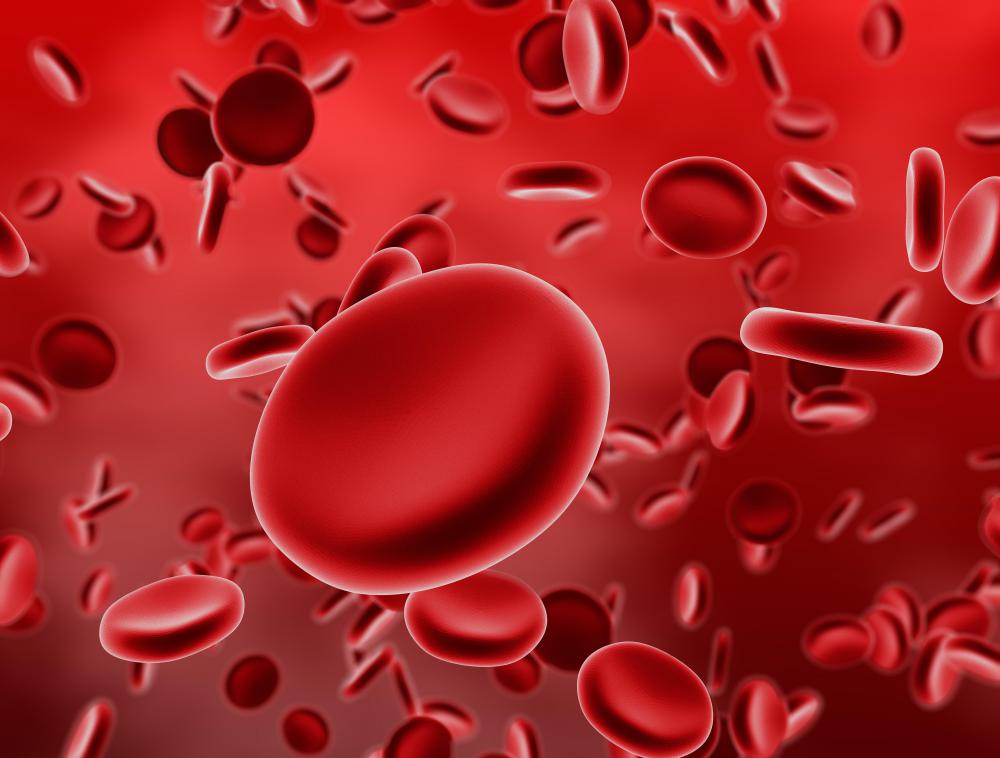At WiseGEEK, we're committed to delivering accurate, trustworthy information. Our expert-authored content is rigorously fact-checked and sourced from credible authorities. Discover how we uphold the highest standards in providing you with reliable knowledge.
What are Oxygen Saturation Levels?
Oxygenated blood is carried to the organs and tissues of the body by the hemoglobin in the red blood cells. Oxygen saturation levels refer to the amount or percentage of red blood cells that are full with oxygen. Oxygen saturation may also be referred to as blood oxygen level.
Normal oxygen saturation levels vary slightly depending on age and activity. A blood oxygen level of less than 90 percent is considered abnormal. The organs in the body need a continuous supply of oxygen to function properly. If the blood oxygen levels in the body become too low, various problems can develop.

When oxygen levels are too low, the condition is known as hypoxemia. Various symptoms can occur depending on how low the oxygen saturation is. Symptoms may include shortness of breathing, fatigue, headache, and confusion. Because oxygen must be supplied to the heart and brain constantly, death can occur if blood oxygen levels become too low.
Oxygen saturation levels may be measured as part of a physical exam or if a patient is showing signs of breathing problems. There are two main ways to do this, including taking blood from an artery, which is called an arterial blood gas test, and obtaining a reading with a pulse oximeter. An arterial blood gas test is considered more accurate, however, it is invasive.

To measure oxygen saturation with an oximeter, a probe is placed a person’s finger, toe, or earlobe and the pulse oximeter machine displays a reading. A reading can be affected by a person moving, fingernail polish, and cold fingers. A pulse oximeter is a quick way to determine oxygen saturation levels.
Various conditions can cause a low oxygen saturation level in the blood. People who have breathing problems, such as asthma or pneumonia, may not be able to get enough oxygen into their lungs. This causes the oxygen levels in the blood to drop. Other conditions that can impair breathing include a drug overdose, head injury, and cardiac conditions, such as a heart attack.

If oxygen saturation is too low, treatment will be needed. The primary treatment for low oxygen saturation is oxygen therapy. Oxygen can be given through a mask or nasal prongs. The amount of oxygen given will depend on how low the oxygen saturation is in the blood. Some people have chronically low oxygen saturation levels and may need to be on oxygen permanently. Various types of home oxygen devices are available.
AS FEATURED ON:
AS FEATURED ON:
















Discussion Comments
I remember that when I had my C-section (after thirty hours of labor - ouch!), afterwards they were concerned about my low blood oxygen. Deep breathing didn't help and I had to have a tube in my nose (nasal cannula, I think they called it). So uncomfortable!
They used the finger clip thing to measure my levels. How does the work? I don't understand how they can tell how much oxygen is in your blood without even looking at your blood!
@honeybees - It's so frustrating when someone won't get help! Treatment for sleep apnea can really be life-changing. My father snored terribly for years and years; my mother even had to move to a different room to get any sleep. He resisted getting tested. He drinks too much and is on medication, and we thought that was the reason why he was so sleepy.
Finally, he agreed to have a sleep study and was fitted with a CPAP (continuous positive airway pressure, I think it means) machine. Wearing the mask at night took some getting used to, but once he got the hang of it, the difference was like night and day.
He used to sleep twelve hours a night and would still be tired and fall asleep in the afternoon. Now, he sleeps seven or eight hours and wakes up refreshed. At Christmas, he stayed awake all afternoon, discontinuing a very special family tradition of him falling asleep in his chair!
I'm not sure if the sleepiness was due to low blood oxygen saturation levels or because he just couldn't sleep deeply with the apnea. But hang in there, honeybees, and keep working on him. Here's hoping it gets better!
My husband snores very loud when he sleeps. I have always been concerned that he has sleep apnea, but he has never been tested for it.
When one of my friends was in medical school she let me borrow her oximeter to see what his oxygen concentration was.
When he was sleeping and it sounded like he wasn't breathing, I would place this on his finger, and it would give me a reading of his oxygen level.
The worst thing was he would always wake up anytime I would do this and so it was hard to get an accurate reading. Using an oximeter is an easy way to found out what someone's oxygen levels are if the conditions are right.
Post your comments